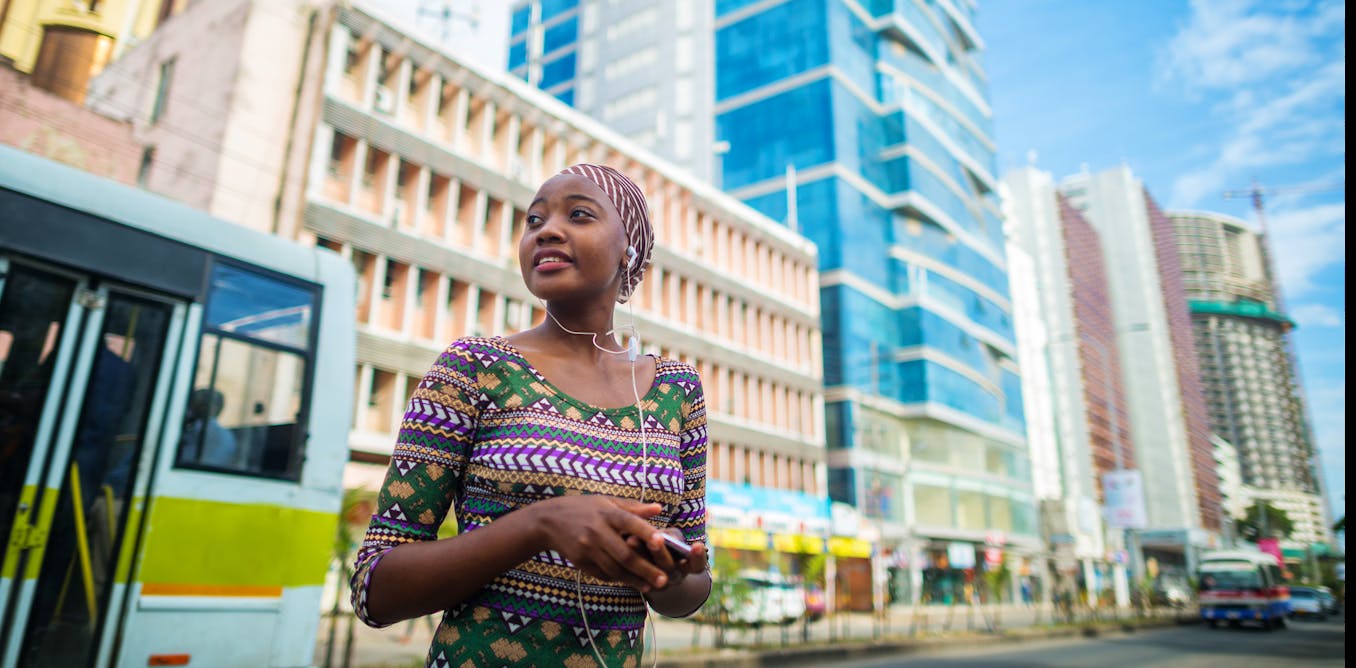Want to fight gender inequality? A review of data from 118 counties shows that development aid works


The Impact of Gender-Related Aid on Gender Inequality

Gender inequality isn’t just unfair — it’s also a drag on the world economy. Giving women the same economic opportunities as men would add about US$12 trillion to global gross domestic product by 2025, one analysis found. That’s an 11% boost.
The link between women’s empowerment and economic growth is well established. When women are economically empowered, they invest more in their families, creating a cycle of positive outcomes that spans generations. Women’s participation in the workforce leads to greater productivity and brings diverse perspectives that enhance decision-making and drive innovation.
Recognizing these benefits, governments and nongovernmental organizations have increasingly directed aid — funds provided to developing countries to foster economic growth — toward promoting women’s empowerment.
The Study
As an economist who studies development, I wanted to know: Does all that money really make a difference? So, in a recent study, my colleagues and I analyzed the impact of gender-related aid on gender inequality using data from 118 countries over a 13-year period, from 2009 to 2022.
What we found was uplifting: Gender-related aid reduced inequality in most countries we studied.
We looked at two types of gender-related aid. The first is funding for projects that tie gender into larger economic goals. Development experts call this “significant gender-related aid.” There’s also aid funding that narrowly and explicitly targets gender equality. Experts call this “principal gender-related aid.”
We found that the first approach consistently and significantly reduced gender inequality in 115 out of 118 counties we studied. The latter approach had statistically significant effects in 85 countries. It also appeared to be much more effective when paired with the first approach.
Our findings strongly suggest that integrating gender-related aid into broader development efforts is crucial for promoting gender equality. Gender and development are intricately intertwined, a fact often overlooked. Recognizing this connection is crucial for achieving sustainable and inclusive growth.
Women’s Empowerment Success Stories
That might all sound pretty abstract, but our research shows that the world has made progress in real people’s lives over the past decades. Cases from several countries show just how much progress is possible:
- Rwanda: Following the 1994 genocide, Rwanda made a concerted effort to rebuild its society with gender equality at its core. Today, women hold 61% of parliamentary seats, the highest percentage in the world. This remarkable achievement is in part a direct result of gender-focused policies and significant investments in women’s political empowerment. Rwanda’s progress illustrates how political will and dedicated gender-related aid can transform a society.
- Bangladesh: Despite traditional gender roles, Bangladesh has made significant strides in gender equality, particularly in education and economic participation. Through targeted programs like the Female Secondary School Stipend Program and microfinance initiatives by organizations like the Grameen Bank, Bangladesh has seen substantial improvements in girls’ education and women’s economic empowerment. These initiatives have contributed to a decline in gender disparities and have spurred economic growth.
- Ethiopia: In recent decades, Ethiopia has invested heavily in education, particularly for girls. Programs aimed at increasing school enrollment and reducing dropout rates among girls have led to improved literacy rates and better health outcomes. These educational advancements have empowered women economically and socially, reducing gender inequality.
Despite progress made, these achievements aren’t set in stone. Instability can rapidly undo years of progress. Recent policy backsliding in Afghanistan, Brazil, and the United States shows the need for vigilance.
Empowering Women Empowers Men, Too
Discussions about the importance of reducing gender inequality often revolve around the direct benefits to women and girls. But everyone, including men, stands to win in a more gender-equal society.
First, women’s economic empowerment leads to stronger economies, which benefits everyone. Research shows that gender equality promotes healthier relationships, reduces violence and fosters more cohesive and supportive communities. Similarly, workplaces prioritizing gender equality tend to have better team dynamics, higher employee satisfaction, and increased productivity. These are gains for everyone, regardless of gender.
And gender equality has distinct benefits for men. This is because it alleviates the pressures associated with traditional masculinity, which can lead to better mental health. For example, in more gender-equal societies, men report being happier with life and less stressed and depressed.
This shows that the benefits of gender equality aren’t limited to women and girls; they extend to all members of society. Everyone has a stake in helping progress move along.
Research-Backed Best Practices
Governments and aid professionals should follow five steps for success to safeguard the advances made in gender equality and continue progressing:
- Keep the aid flowing: Continued financial and technical support for gender equality initiatives is vital. Our research suggests policymakers should focus on integrating gender considerations into all development projects.
- Engage everyone: Involving men and boys in gender equality efforts helps to challenge and change harmful gender norms, fostering a more inclusive society.
- Tailor strategies: Although aid has an effect across the board, gender equality initiatives must consider each country’s unique sociopolitical and cultural contexts. Tailoring strategies to fit these contexts ensures that interventions are relevant and practical.
- Strengthen institutions: Effective institutions and governance are crucial for successfully implementing and sustaining gender equality initiatives. Efforts to improve governance and reduce corruption will enhance the impact of aid.
- Promote education: Schools are a powerful tool for promoting gender equality. Investing in educational programs that empower women and girls and raise awareness about gender issues is essential for long-term change.
Gender equality is a cornerstone of a just and prosperous society. The benefits of empowering women extend far beyond the immediate recipients of gender-related aid, fostering economic growth, political stability, and social cohesion. Our research shows that efforts to empower women really do pay off — literally and otherwise.
SDGs, Targets, and Indicators
| SDGs | Targets | Indicators |
|---|---|---|
| SDG 5: Gender Equality | Target 5.1: End all forms of discrimination against all women and girls everywhere | Indicator 5.1.1: Whether or not legal frameworks are in place to promote, enforce, and monitor equality and non-discrimination on the basis of sex |
| SDG 5: Gender Equality | Target 5.5: Ensure women’s full and effective participation and equal opportunities for leadership at all levels of decision-making in political, economic, and public life | Indicator 5.5.1: Proportion of seats held by women in national parliaments and local governments |
| SDG 8: Decent Work and Economic Growth | Target 8.5: Achieve full and productive employment and decent work for all women and men, including for young people and persons with disabilities, and equal pay for work of equal value | Indicator 8.5.1: Average hourly earnings of female and male employees, by occupation, age, and persons with disabilities |
| SDG 10: Reduced Inequalities | Target 10.2: By 2030, empower and promote the social, economic, and political inclusion of all, irrespective of age, sex, disability, race, ethnicity, origin, religion, or economic or other status | Indicator 10.2.1: Proportion of people living below 50 percent of median income, by age, sex, and persons with disabilities |
| SDG 16: Peace, Justice, and Strong Institutions | Target 16.7: Ensure responsive, inclusive, participatory, and representative decision-making at all levels | Indicator 16.7.1: Proportions of positions in public institutions (national and local legislatures, public service, and judiciary) compared to national distributions, by sex, age, persons with disabilities, and population groups |
1. Which SDGs are addressed or connected to the issues highlighted in the article?
- SDG 5: Gender Equality
- SDG 8: Decent Work and Economic Growth
- SDG 10: Reduced Inequalities
- SDG 16: Peace, Justice, and Strong Institutions
2. What specific targets under those SDGs can be identified based on the article’s content?
- Target 5.1: End all forms of discrimination against all women and girls everywhere
- Target 5.5: Ensure women’s full and effective participation and equal opportunities for leadership at all levels of decision-making in political, economic, and public life
- Target 8.5: Achieve full and productive employment and decent work for all women and men, including for young people and persons with disabilities, and equal pay for work of equal value
- Target 10.2: By 2030, empower and promote the social, economic, and political inclusion of all, irrespective of age, sex, disability, race, ethnicity, origin, religion, or economic or other status
- Target 16.7: Ensure responsive, inclusive, participatory, and representative decision-making at all levels
3. Are there any indicators mentioned or implied in the article that can be used to measure progress towards the identified targets?
- Indicator 5.1.1: Whether or not legal frameworks are in place to promote, enforce, and monitor equality and non-discrimination on the basis of sex
- Indicator 5.5.1: Proportion of seats held by women in national parliaments and local governments
- Indicator 8.5.1: Average hourly earnings of female and male employees, by occupation, age, and persons with disabilities
- Indicator 10.2.1: Proportion of people living below 50 percent of median income, by age, sex, and persons with disabilities
- Indicator 16.7.1: Proportions of positions in public institutions (national and local legislatures, public service, and judiciary) compared to national distributions, by sex, age, persons with disabilities, and population groups
4. Table: SDGs, Targets, and Indicators
| SDGs | Targets | Indicators |
|---|---|---|
| SDG 5: Gender Equality | Target 5.1: End all forms of discrimination against all women and girls everywhere | Indicator 5.1.1: Whether or not legal frameworks are in place to promote, enforce, and monitor equality and non-discrimination on the basis of sex |
| SDG 5: Gender Equality | Target 5.5: Ensure women’s full and effective participation and equal opportunities for leadership at all levels of decision-making in political, economic, and public life | Indicator 5.5.1: Proportion of seats held by women in national parliaments and local governments |
| SDG 8: Decent Work and Economic Growth | Target 8.5: Achieve full and productive employment and decent work for all women and men, including for young people and persons with disabilities, and equal pay for work of equal value | Indicator 8.5.1: Average hourly earnings of female and male employees, by occupation, age, and persons with disabilities |
| SDG 10: Reduced Inequalities | Target 10.2: By 2030, empower and promote the social, economic, and political inclusion of all, irrespective of age, sex, disability, race, ethnicity, origin, religion, or economic or other status | Indicator 10.2.1: Proportion of people living below 50 percent of median income, by age, sex, and persons with disabilities |
| SDG 16: Peace, Justice, and Strong Institutions | Target 16.7: Ensure responsive, inclusive, participatory, and representative decision-making at all levels | Indicator 16.7.1: Proportions of positions in public institutions (national and local legislatures, public service, and judiciary) compared to national distributions, by sex, age, persons with disabilities, and population groups |
Source: theconversation.com








